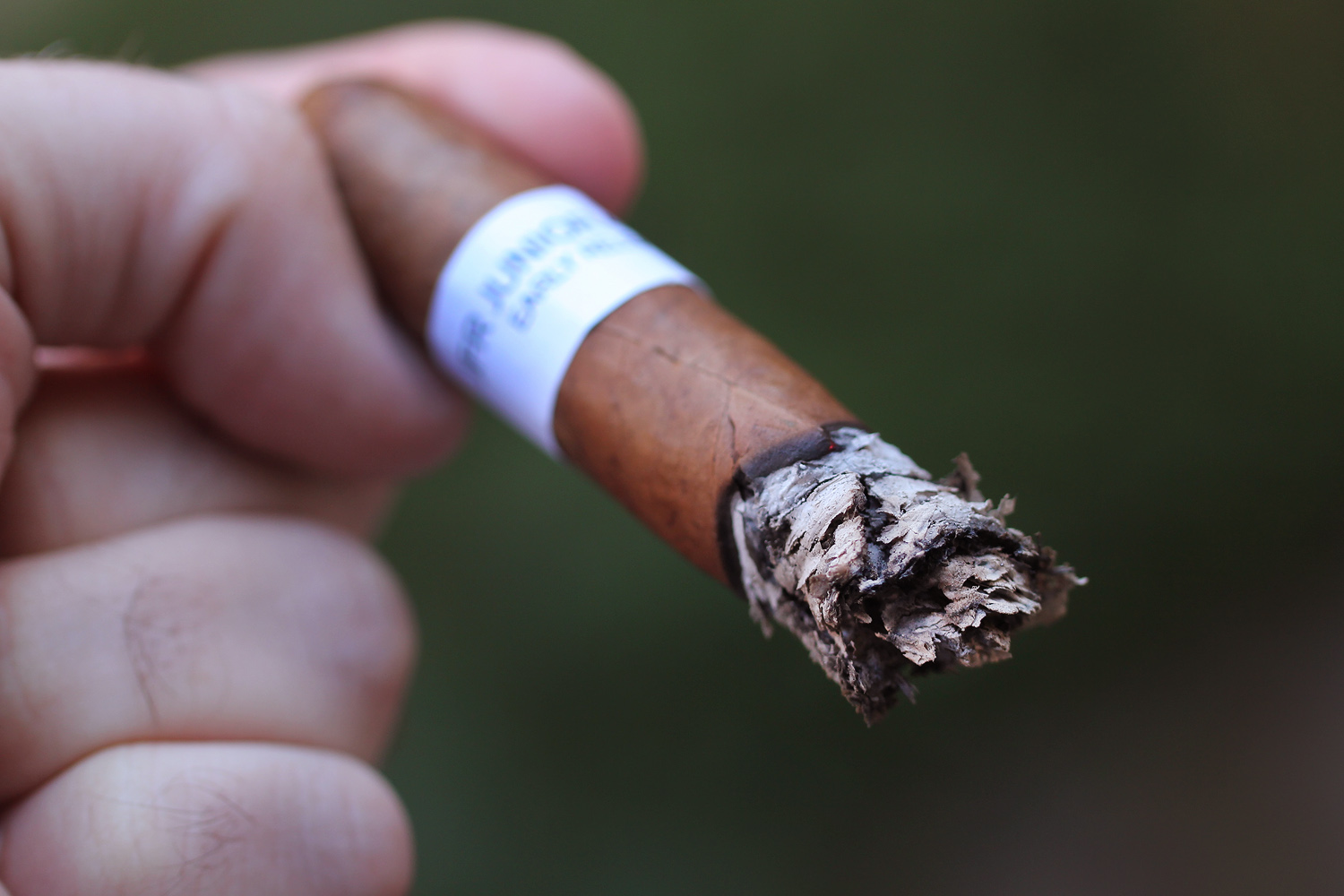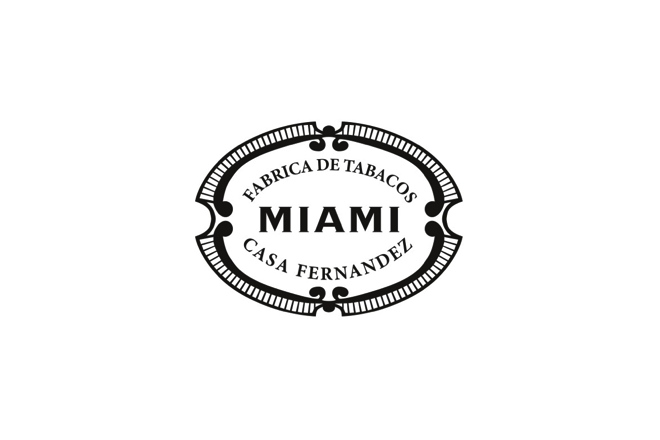To say that Casa Fernández’s JFR (Just for Retailers) line has been a huge success would be an understatement. When I visited with Paul Palmer back in February 2012, he told me that when the company launched the JFR 770 at the 2011 IPCPR Convention and Trade Show, Casa Fernández made 1,000 30–count boxes but ended up selling 1,800. Looking ahead to that year’s trade show, he expected to sell around 2,000 boxes of the maduro version that would be released. Both continue to be incredibly popular sellers in humidors across the country.
The reason seems simple enough: among a consumer base that has become familiar with the idea of super-sizing and “bigger is better,” the JFR line delivered the goods time and again: standard and large formats cigar with a pleasing flavor profile at a reasonable price, often times between $5–$8 per cigar. The JFR 770 L.E. debuted with an appropriate price of $7.70 before taxes, making it hard for the value-oriented consumer to ignore.
While the company has been predominantly growing their JFR line at the larger end of the spectrum, they recently announced a new addition that would introduce the JFR line in its smallest size yet, the JFR Junior. From the press release:
Casa Fernández is releasing a new vitola under the JFR line to be named the ‘Junior.’ It was created to contrast the industry’s first and very popular 7 x 70 ring gauge cigar, the JFR 770LE. The ‘Junior’ vitola is defined as a 4.5 x 46, it will have a cigar band and be offered in a box of 50 cigars. The ‘Junior’ is available in a Corojo 1999 Habano cover leaf from Jalapa Valley and in a San Andres Maduro cover leaf. The ‘Junior’ is a medium strength, medium body, manufactured at the Casa Fernández Esteli Factory in Nicaragua. The official release date is November 15th.
With the addition of the JFR Junior, the line is available in six sizes, all of which are packed in 50–count boxes:
-
JFR Junior — 4 1/2 x 46
-
JFR Robusto — 5 1/2 x 50
-
JFR Piramide — 6 1/4 x 52
-
JFR Super Toro — 6 1/2 x 52
-
JFR Titan — 6 x 60
-
JFR 770 L.E. — 7 x 70
All the sizes are available in either a Nicaraguan Corojo 1999 wrapper or a maduro wrapper, with the smaller sizes using a Habano maduro while the 770 L.E. uses a Mexican San Andrés wrapper due to the need for larger leaves to adequately cover that vitola.
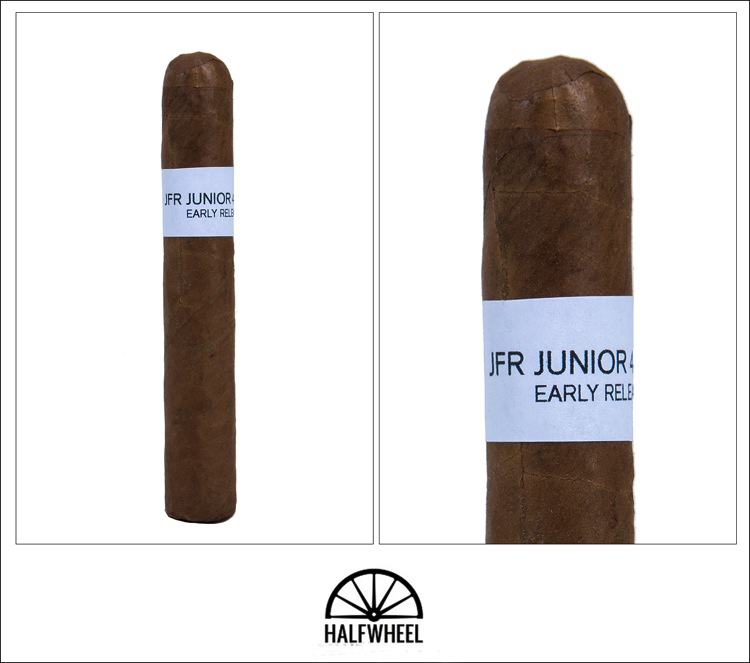
-
Cigar Reviewed: JFR Junior Corojo
-
Country of Origin: Nicaragua
-
Factory: Casa Fernández Estelí
-
Wrapper: Nicaraguan Corojo 1999 (Aganorsa)
-
Binder: Nicargaua (Aganorsa)
-
Filler: Nicaragua (Aganorsa)
-
Size: 4 1/2 Inches
-
Ring Gauge: 46
-
Vitola: Corona Extra
-
MSRP: $4.20 (Boxes of 50, $210.00)
-
Release Date: November 15, 2013
-
Number of Cigars Released: Regular Production
-
Number of Cigars Smoked For Review: 3
I’m first struck by how soft the wrapper is — it has a smooth, almost silky texture at points with minimal veins and no toothiness. There’s a bit of uniform give throughout the cigar and the soft wrapper might exaggerate that give just a bit. The note coming off the foot is reminiscent of pretzel dough and is fairly subdued, with only one of the three cigars showing any pronounced pepper. There’s little resistance on the cold draw, and the note is more toward a white meat such as pork or chicken, but very dry and again subdued.
Immediately upon being lit, the JFR Junior Corojo offers a good bit of pepper in the plentiful yet thin grey smoke that comes off the cigar. The bulk of the pepper is picked up on the back of the tongue and throat, while there is a decent amount for the nose as well. The cigar picks up a touch of chalk and minerality, as well as a touch of sourness that it is detected in both the nose and mouth. The ash is light gray and tight, with the burn line fairly even but wavering just a touch. Flavors mellow down fairly quickly, as once the first bit of ash drops off at about half-an-inch long, the Junior seems to backpedal from its more upfront start as notes of leather and cinnamon start to come out in the smoke.
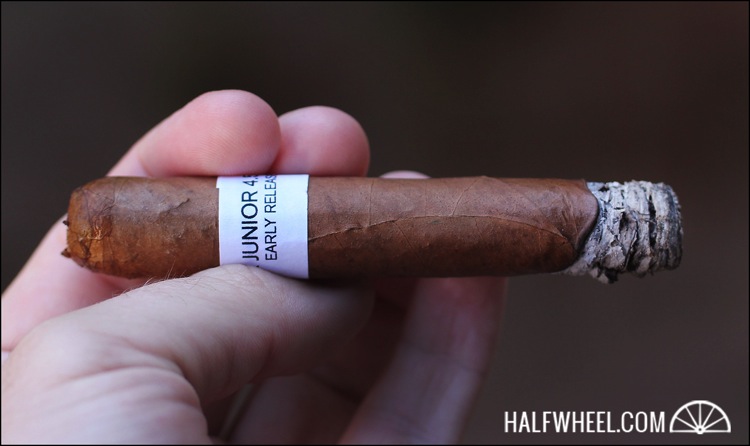
Flavors lull a bit in the beginning of the second third of the JFR Junior Corojo before roaring back at the midway point with much more body and strength. It’s not an overly peppery return, but there is a thick note of bread and pretzel dough with some baking spices in the background that bring the flavor front and center. Earth starts to enter the equation and makes it a bit harder to pull out any specific notes, instead taking control of the flavor and turning into a medium to medium-full note that doesn’t have any particularly distinctive notes, other than earth and burning tobacco.
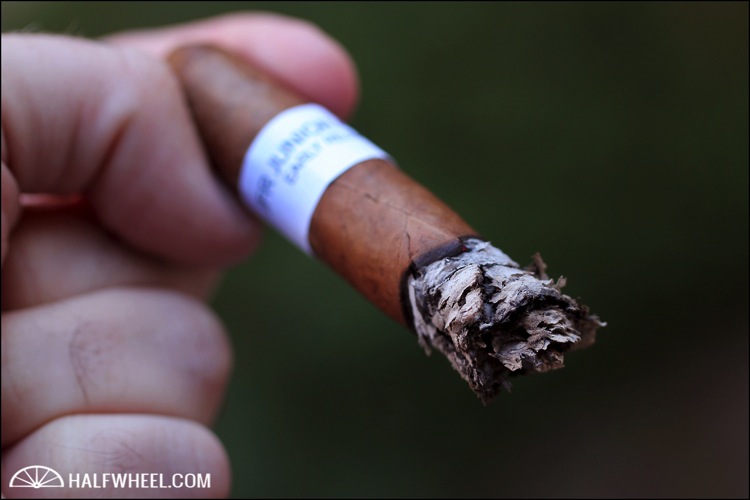
The final third of the JFR Junior Corojo keeps the course that was rerouted at the midway point, staying true to notes of earth and tobacco with a touch of leather that comes out at points. None are overly spectacular, but none are unfavorable, and the cigar’s construction stays solid with a sharp burn line and ash. There’s a touch of root beer sweetness that comes on quickly right about where the band would be and ramps up quickly, adding a last update to this story before the increased heat adds a bit of bite in the final inch that brings an abrupt halt to the cigar’s ability to be enjoyed and landing it in the ashtray.

Final Notes:
- I had forgotten that the JFR line includes several standard vitolas in addition to the larger 6 x 60 and 7 x 70 sizes.
- On their website, Casa Fernández divides their catalog into three categories: super premium, premium and bundles. JFR is listed under the premium header, along with their Copacabana line.
- Even though I think the impression is that JFR cigars are only supposed to be available for in-person purchase at brick-and-mortar retailers, you should have no trouble finding them online.
- Casa Fernández also recently announced a new size for their Aganorsa Maduro line called the Ilustre, a box-pressed 5 x 48 vitola called the Ilustre.
- I went back to some notes I had from the JFR 770 L.E. I smoked when it came out and was surprised how similar they were to this cigar, despite the massive difference in size.
- The cigars for this review were provided by Casa Fernández.
- Final smoking time is about one hour and 30 minutes.
- Site sponsors Atlantic Cigars, BestCigarPrices.com, Cigar King and Superior Cigars all carry JFR Cigars. Be sure to tell them halfwheel sent you.
I can't say I've ever heard anyone praising the complexity and depth of flavors in the existing JFR line of cigars, and while I was hoping that the JFR Junior's smaller ring gauge might change that, I just couldn't find anything that was particularly noteworthy save for a few puffs in the final third where the rich root beer sweetness came out to coat the earth and tobacco with syrupy goodness. The cigar is very agreeable, and I certainly wouldn't be opposed to having a few in my humidor. The gain from the smaller size didn't seem as pronounced as I was hoping, but it does show that the line has a solid core and isn't one to overlook, especially as a wallet-friendly go-to option for when the occasion arises.

